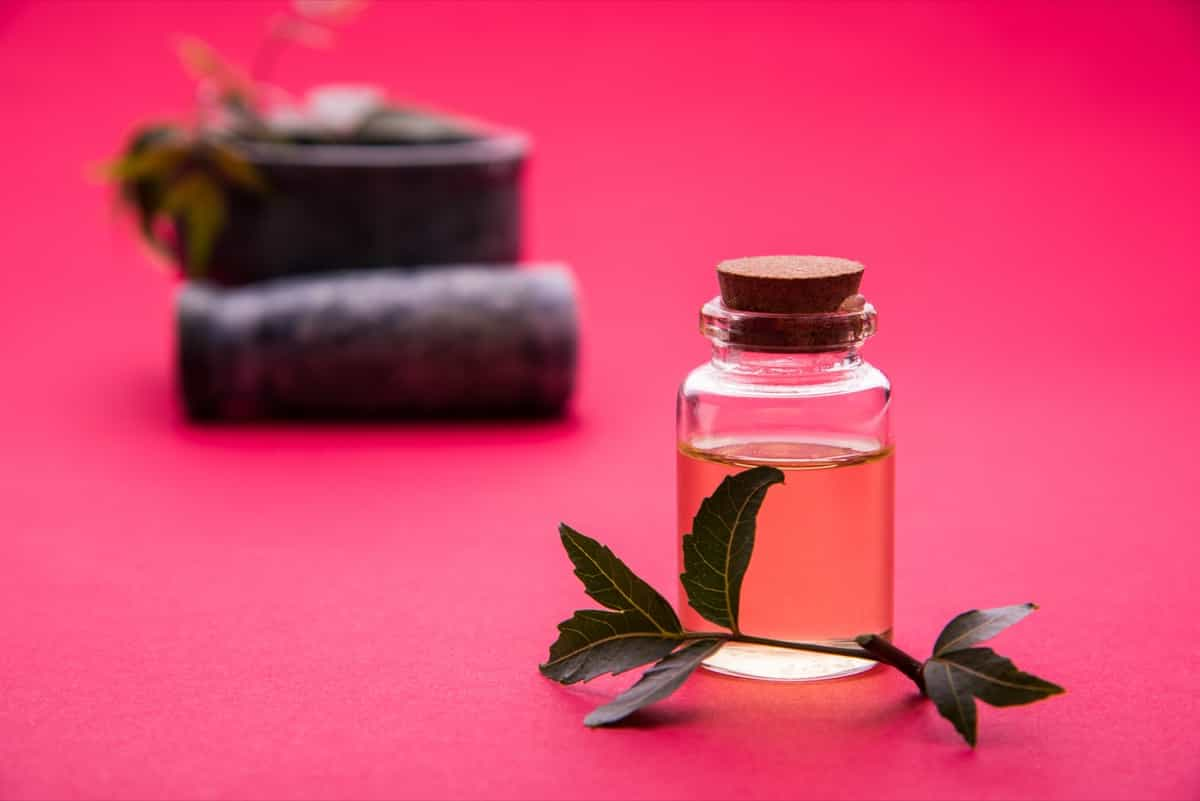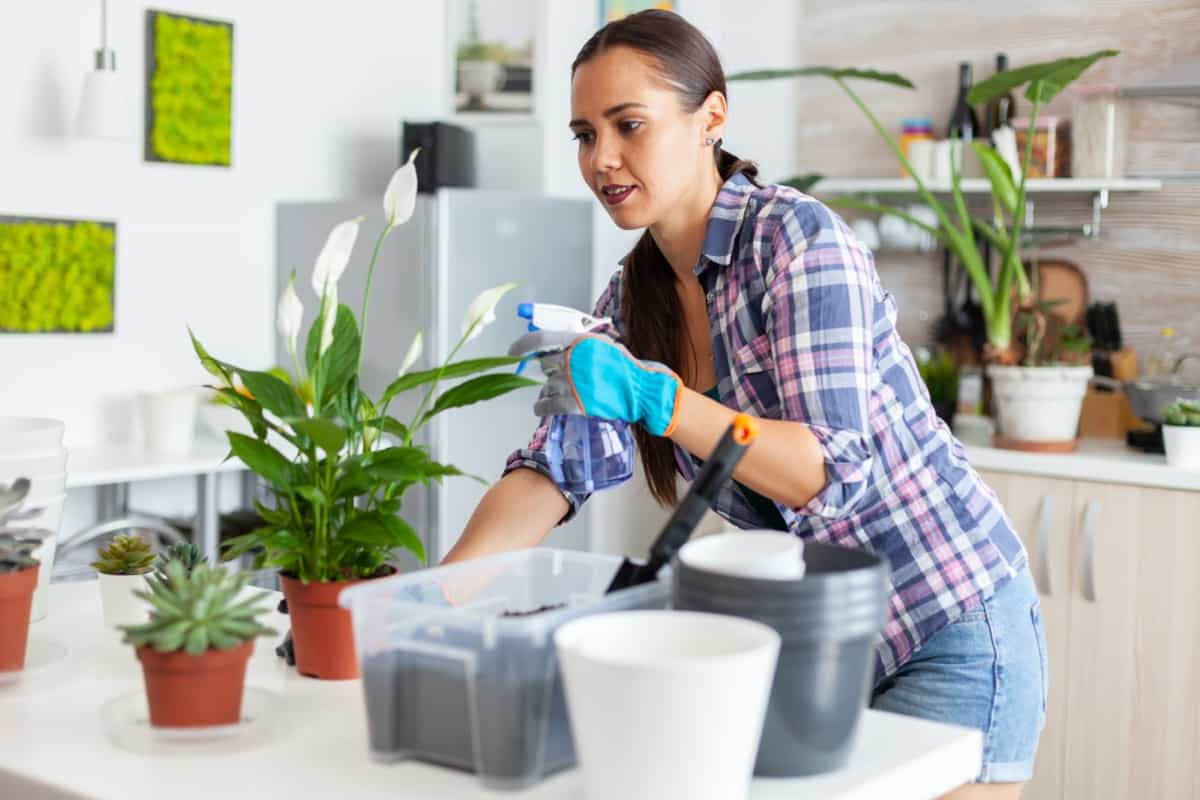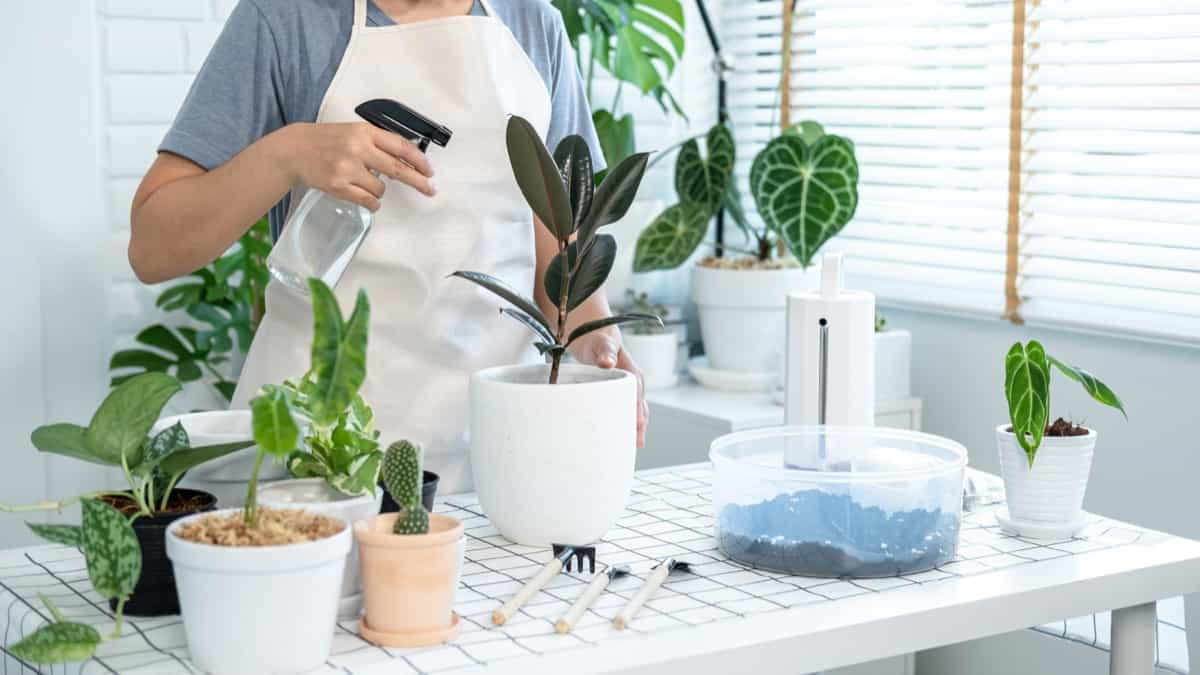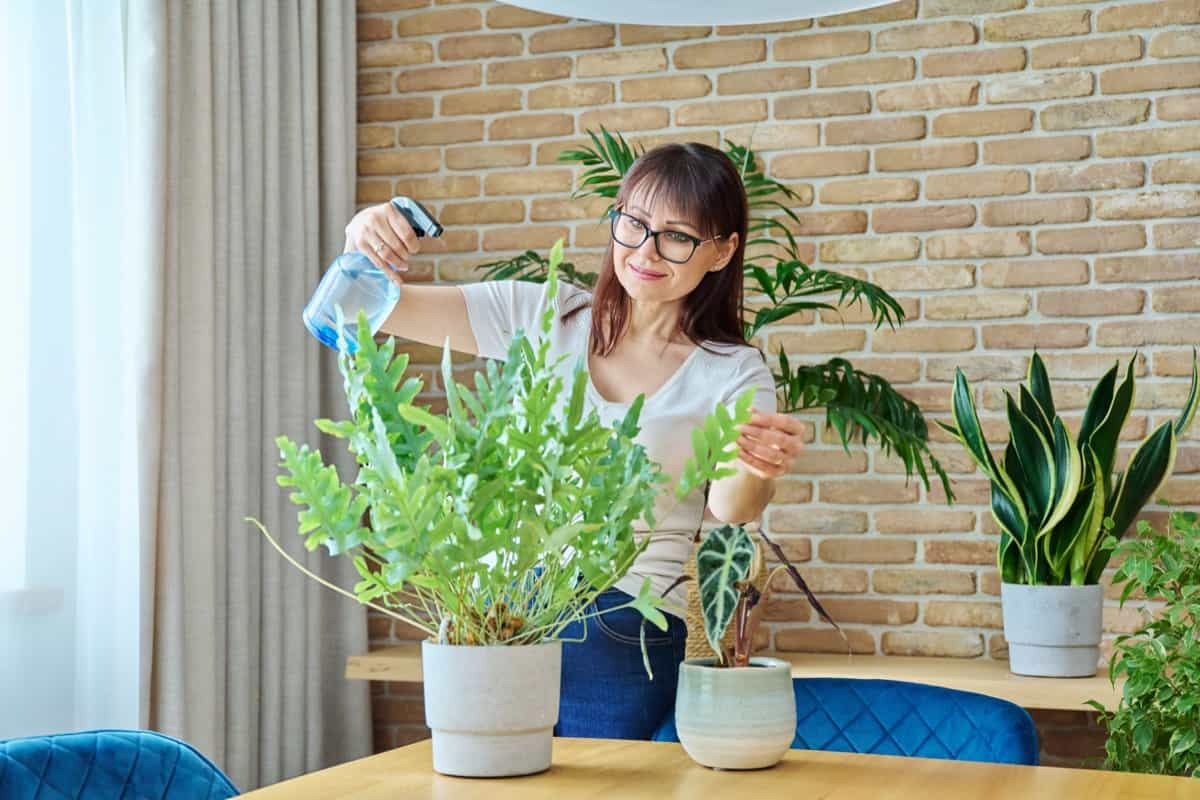Neem oil is a natural and effective solution for maintaining the health and vitality of houseplants. Extracted from the neem tree seeds, this organic oil has numerous benefits that can help keep your plants pest-free and thriving. In this document, we will explore the benefits of neem oil for houseplants, provide a simple neem oil spray recipe, how to use neem oil on plants, and guide you on how to use and apply it.

Benefits of Neem Oil for Houseplants
Neem Oil for Houseplant Pests
Do You Spray Neem Oil on Soil or Leaves?: One of the main benefits of neem oil is its ability to repel pests. When applied to houseplants, it acts as a deterrent for common pests such as aphids, spider mites, whiteflies, and mealybugs. The oil coats the leaves and stems, creating a barrier that insects find unappealing. This helps to prevent infestations and protect the health of your plants.
In addition to repelling pests, neem oil also has insecticidal properties. Neem oil spray contains compounds that disrupt the life cycle of insects, making it an effective tool for controlling existing infestations. When pests come into contact with neem oil, it affects their feeding and reproductive abilities, eventually leading to their demise.
Organic Neem Oil for Indoor Plants
- Organic Neem Oil for Indoor Plants Benefits: Neem oil is a great fungicide. You can use neem oil to prevent or even kill fungi on your plants. Use neem oil for powdery mildew and other common fungal diseases, including Black spots. Scab
- How to Use Organic Neem Oil for Indoor Plants: Spray the entire plant—leaves, stems, and soil— with neem oil once a week until there are no more signs of pests on the plant.
- Which Indoor Plants Don’t Like Neem Oil: Neem oil shouldn’t be applied to plants like caraway, basil, cilantro, marjoram, dill, parsley, oregano, and thyme.
How to Use Neem Oil on Houseplants
- How to Dilute Neem Oil for Plants? Natural pesticides such as neem oil are extracted from the seeds of neem trees. In the same way, hydrogen peroxide can be diluted with water; neem oil can also be diluted with water. In contrast to hydrogen peroxide, neem oil solutions kill larvae and fungus gnats, thereby removing the pests permanently.
- How to Use Neem Oil on Houseplants for Gnats: Neem oil spray can be made by blending two tablespoons of neem oil with one teaspoon of dish detergent. Directly apply two to four cups of the solution to the soil.
In case you missed it: How to Treat Brown Spots on Houseplants Naturally: Causes, Fix with Effective Home Remedies

Benefits of Neem Oil for Indoor Gardening
It is especially efficient against soft-bodied, leaf-sucking, chewing insects and frequent garden pests. Aphids, mealybugs, mites, thrips, scale flies, and whiteflies are examples of pests. Neem oil also contains anti-fungal qualities that are good against powdery mildew and keep it from spreading to tissue.
Neem Oil Spray Recipe for Houseplants
How Much Neem Oil Per Litre Of Water
Prepare 1 liter of neem oil Spray. Mix 5 ml of neem oil concentrate with 1 litre of water. Now, let’s move on to a simple Homemade neem oil spray recipe for houseplants,
Ingredients
- 1 teaspoon of pure neem oil
- 1 teaspoon of liquid dish soap (preferably organic)
- 1 quart (4 cups) of warm water
Instructions
- In a small bowl, combine the neem oil and liquid dish soap.
- Stir the mixture gently to ensure they are well mixed.
- By leaving some space at the top, fill a spray bottle with warm water,
- Pour the neem oil and dish soap mixture into the spray bottle.
- Close the spray bottle with a cap and shake it vigorously to blend all the ingredients thoroughly.
- Now that you have prepared the neem oil spray
Neem Oil and Castile Soap Insecticide Recipe
To make a basic neem oil spray, dissolve 1 tbsp of neem oil and 1 tbsp of castile soap in 1l of warm water, and mix thoroughly.
Neem Oil Drench for Root Rot
Mix one teaspoon of organic neem oil with one quart of water. This dilution will ensure that the oil is not too concentrated and safe for your plants.
In case you missed it: Herbal Remedies for Houseplant Pests and Diseases: Prevention, Treatment, and Solutions

How to Use Neem Oil Drench for Root Rot?
- Neem Oil Soil Drench: Use as a soil drench to prevent root rot. Pour the solution onto the soil around the plant to soak it completely.
- Drain and Replant: Remove the plant from the neem oil solution after the soaking period and allow excess liquid to drain. Replant the treated plant in fresh, well-draining soil. Make sure the pot should have proper drainage holes to prevent waterlogging in the future.
- Repeat as Necessary: Depending on the severity of the root rot, you may need to repeat the neem oil drench treatment every two weeks until the condition improves.
Using Neem Oil as a Leaf Shine
- Using Neem Oil as a Leaf Shine Benefits: Spray neem oil on a damp cloth (preferably microfiber) and gently wipe the plant – every leaf, top, and bottom. This will kill pests you did not see (and some fungal spores), give your plants shinier leaves, and make them happier and healthier.
- Neem Oil as Shine Recipe: Neem oil can be used as a leaf shine by mixing it with natural emulsifiers such as pure Castile liquid soap or Dawn dish soap. Pour four teaspoons of concentrated neem oil into a spray bottle after mixing a tablespoon of soap into the water to break down the surface.
Neem Oil for Powdery Mildew on Indoor Plants
Neem oil can also manage some fungal disease issues, such as powdery mildew. It prevents the germination and penetration of fungal spores into leaf tissue. Neem won’t “cure” a plant already infected with a disease caused by a fungus, but it can stop the disease from spreading to healthy tissue. How often to apply neem oil for powdery mildew: every 7 to 14 days
How to Mix Neem Oil for Powdery Mildew
- Determine the Neem Oil Concentration: Powdery mildew severity may vary, so adjusting the neem oil concentration accordingly is important. A 1% neem oil solution is recommended for a mild infestation, while a 2% solution is suitable for moderate to severe cases.
- Dilute the Neem Oil: In a clean container, measure the required amount of Neem oil using a cup or dropper.
- Add Water: Fill the container with the required amount of water. The neem oil-to-water ratio should be maintained according to the desired concentration. For instance, for a 1% solution, mix 10 mL of neem oil with 990 mL of water.
- Mix Thoroughly: Stir the neem oil and water mixture vigorously for a few minutes to ensure proper emulsification. Alternatively, you can use a handheld mixer or shake the container vigorously to achieve a well-blended solution.
Neem Oil For Houseplant Soil Pests Recipe
- Mix 5 ml neem oil with 5 ml of mild liquid soap.
- Add 1 liter of water to it and stir well.
- Fill the diluted solution into a spray bottle and use it on the plants.
- Use the solution within 8 hours after preparation for the best results.
- How to Use Neem Oil for Houseplant Soil Pests: Apply as a foliar spray and soil drench every three weeks for prevention or every week for infestations. Shake the bottle often while applying to keep the oil distributed throughout the mixture.
- How to Use Neem Oil on Houseplants for Fungus Gnats: Neem oil spray can be made by mixing two tablespoons of neem oil in 1-liter water along with one teaspoon of dish detergent. The solution should be applied directly to the soil in amounts ranging from two to four cups.
In case you missed it: 11 Best Homemade Natural Garden Fertilizers: DYI for Houseplants, Vegetables, Flowers, and Herbs

Conclusion
In conclusion, neem oil offers a range of benefits for houseplant care, including pest control, prevention of fungal diseases, and boosting plant immunity. By following the simple spray recipe and application instructions provided in this document, you can effectively use neem oil to maintain the health and vitality of your houseplants.
- Feed Your Flock for Less: Top 10 Tips to Save on Chicken Feed
- Ultimate Guide to Ossabaw Island Hog: Breeding, Raising, Diet, and Care
- Hatching Answers: The Top 10 Reasons Your Chickens Aren’t Laying Eggs
- Eggs and Economics: Breaking Down the Cost of Raising Backyard Chickens
- Defend Your Greens: Proven Methods to Keep Iguanas Out of Your Garden
- Ultimate Guide to Cinnamon Queen Chicken: A Comprehensive Guide for Beginners
- Ultimate Guide to California Tan Chicken: Breeding, Raising, Diet, Egg-Production and Care
- Ultimate Guide to Marsh Daisy Chicken: Breeding, Raising, Diet, and Care
- 10 Types of Chicken Farming Businesses You Can Start for Profits